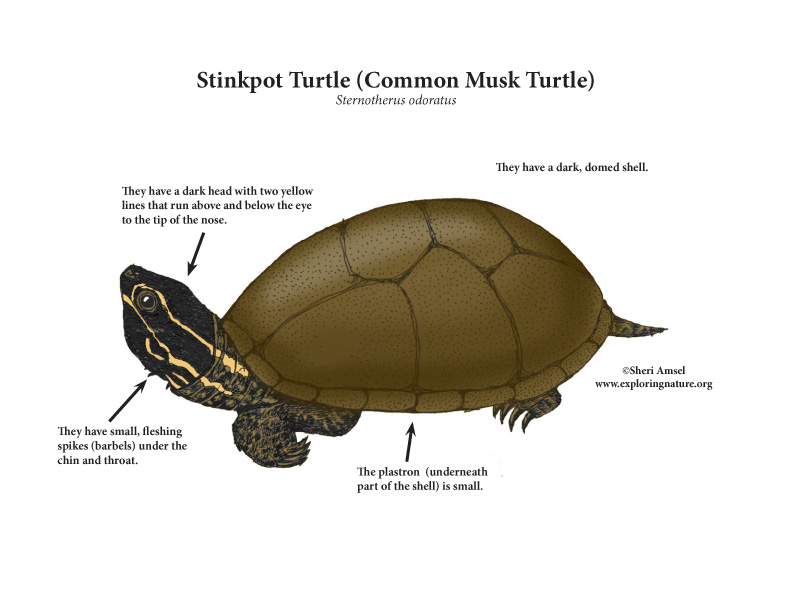

They are found in Eastern North America from Ontario to Florida and west to Texas and the Great Lakes region.
They live in shallow wetlands: lakes, ponds, slow-moving streams and rivers.
They are small turtles with a dark, domed shell or carapace that is about 3-5 inches long. They have a dark head with two yellow lines that run above and below the eye to the tip of the nose. The lines are more visible in younger turtles. They have small, fleshing spikes (barbels) under the chin and throat. Males are larger. The underneath part of the shell (plastron) is small.
They are active at night (nocturnal), so are not seen basking in the sun like other turtle species. They excrete a foul smelling, orange fluid from chest glands (at the edge of the plastron) when startled. They also may bite when threatened.
They eat water insects, crayfish, snails, slugs, tadpoles, and other invertebrates and spme plant matter. They are omnivores.
They are eaten by raccoons.
Females may lay two batches (clutches) of eggs – one in the fall and one in the spring. They lay up to 9 eggs under the leaf litter on the forest floor near their wetland.
They are threatened by habitat loss. Scientists believe that they can live up to 50 years.
When you research information you must cite the reference. Citing for websites is different from citing from books, magazines and periodicals. The style of citing shown here is from the MLA Style Citations (Modern Language Association).
When citing a WEBSITE the general format is as follows.
Author Last Name, First Name(s). "Title: Subtitle of Part of Web Page, if appropriate." Title: Subtitle: Section of Page if appropriate. Sponsoring/Publishing Agency, If Given. Additional significant descriptive information. Date of Electronic Publication or other Date, such as Last Updated. Day Month Year of access < URL >.
Amsel, Sheri. "Turtle (Stinkpot) or Common Musk Turtle" Exploring Nature Educational Resource ©2005-2024. December 14, 2024
< http://www.exploringnature.org/db/view/Turtle-Stinkpot-or-Common-Musk-Turtle >

